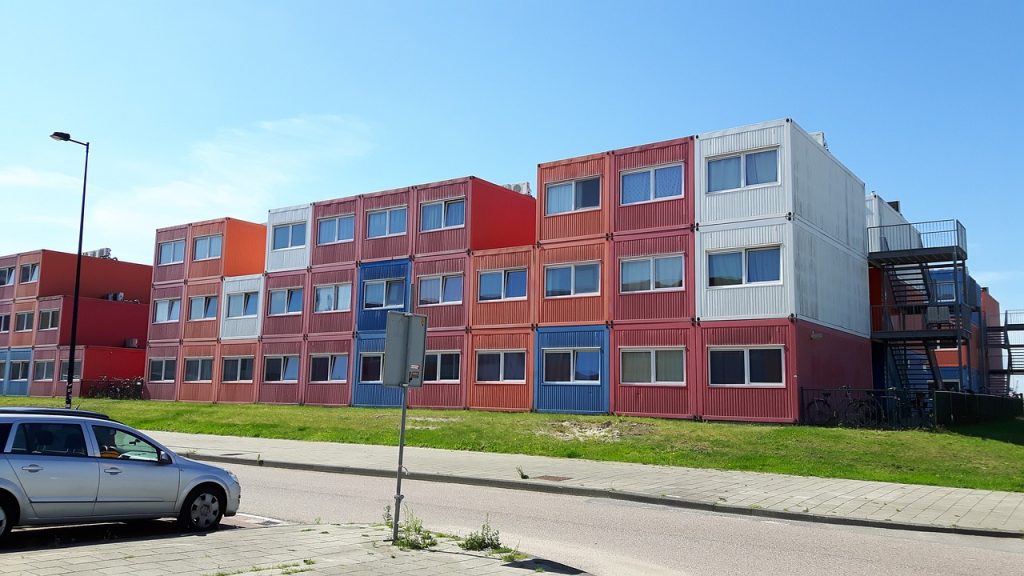Greetings, fellow container home enthusiasts! It’s Emily Owens here, your friendly neighborhood container home aficionado, back with another intriguing topic that has been brewing in the world of shipping container architecture. Today, we’re going to delve into the fascinating world of construction challenges faced when dealing with material limitations in container homes.
While container homes have gained popularity for their eco-friendliness and affordability, they are not without their fair share of hurdles. These hurdles, often rooted in the unique properties of shipping containers, require some creative problem-solving and a dash of humor to navigate. So, sit back, relax, and join me as we explore some of the most intriguing material limitations in container homes and how to tackle them.
Size Matters: The Container Conundrum
Containers come in standard sizes – typically 20 or 40 feet in length and 8 feet in width. While this might seem like a great starting point, it can become a challenge when trying to create spacious living areas. Imagine trying to fit a comfortable bedroom, a kitchen, and a bathroom into a space roughly the size of a parking spot. It’s like playing an architectural game of Tetris!
Solution: To maximize space, consider stacking containers or extending them horizontally. This can create a more open and roomy feel. Also, don’t forget the power of clever interior design and multifunctional furniture to make the most of every square foot.
Structural Integrity: Cutting and Reinforcing
One of the most intriguing aspects of container homes is the need to cut through their steel walls to create openings for doors, windows, and even to connect multiple containers. However, this also poses a structural challenge, as cutting the container can weaken its integrity.

Solution: Reinforcing is the name of the game. You’ll need to add steel beams or frames to ensure the structural strength of the container remains intact. It’s like giving your container a steel exoskeleton!
Insulation Woes: Battling Temperature Extremes
Containers are not known for their insulation properties. They can become unbearably hot in the summer and freezing cold in the winter. This temperature fluctuation isn’t ideal for comfortable living.
Solution: Invest in high-quality insulation materials and techniques. Spray foam insulation is a popular choice, as it provides an airtight seal and helps maintain a comfortable temperature year-round. Additionally, you can consider adding a green roof or planting vines for natural insulation and a touch of eco-friendliness.
Rust Never Sleeps: The Perils of Corrosion
Containers are designed to withstand harsh maritime conditions, but they are not immune to rust and corrosion, especially when exposed to moisture for extended periods. This can be a significant concern, especially if you’re building in a humid or coastal area.
Solution: Regular maintenance and proper rust prevention techniques are essential. Applying a rust-resistant coating and keeping the container elevated on concrete blocks or piers to allow airflow underneath can help combat corrosion.
Limited Aesthetics: The Industrial Vibe
Container homes often have an unmistakable industrial look that might not be everyone’s cup of tea. Dealing with the limited aesthetic appeal of containers can be a real challenge when you want a more traditional or rustic appearance.
Solution: Get creative with cladding! You can use various materials like wood, stone, or stucco to cover the exterior of the containers and achieve the desired aesthetic. This not only adds character but also enhances insulation.
Plumbing and Utilities: The Tangled Web
Plumbing and utilities in container homes can be a logistical puzzle. Finding the right placement for pipes and electrical wiring while ensuring they meet local building codes can be a headache.
Solution: Plan your utilities meticulously from the start. Consider the layout of your container home and consult with professionals to ensure proper installation. It’s like solving a complex jigsaw puzzle, but once you get it right, it’s incredibly satisfying.
Transportation Troubles: Getting the Containers to Your Site
Transporting shipping containers to your construction site might sound straightforward, but it can be surprisingly complex. Narrow roads, low bridges, and tight corners can all pose problems for container delivery.
Solution: Plan your transportation route carefully and communicate with the shipping company about any potential obstacles. You may need to arrange for special equipment or even disassemble and reassemble the containers on-site.
Budget Blues: Balancing Cost and Quality

Container homes are often praised for their affordability, but balancing cost and quality can be a challenge. Cutting too many corners can lead to structural issues, while overspending can put a strain on your budget.
Solution: Create a detailed budget from the outset, including contingency funds for unexpected expenses. Prioritize quality where it matters most, like insulation and structural integrity, and get creative with cost-effective solutions for other aspects of your home.
The D.I.Y. Dilemma: To Build or Not to Build?
The allure of building your own container home can be irresistible, but it’s not for the faint of heart. Construction challenges can be daunting, and taking on too much yourself can lead to frustration.
Solution: Consider your skill level and the complexity of your project. Sometimes, it’s best to enlist the help of professionals, especially for critical tasks like cutting and welding containers. There’s no shame in getting a little expert assistance.
In conclusion, container homes may have their share of material limitations and construction challenges, but they also offer a unique opportunity for creativity and innovation. With the right mindset, careful planning, and a touch of humor, you can transform these challenges into opportunities to create your dream container home. So, fellow container enthusiasts, keep dreaming, keep building, and may your container adventures be filled with joy and satisfaction!




















Find Us on Socials